Business
Techpreneur King Davis to Revolutionize Retail with The 95 Agency and Shwcse
Published
1 year agoon

Photo Credits- Norman Hooks
King Davis, the visionary founder of The 95 Agency and co-founder of Shwcse, is set to disrupt the fashion industry with a groundbreaking tech platform. The 95 Agency, a branding and marketing agency, is the driving force behind Shwcse, a transformative marketplace for boutiques, retailers, and independent designers. This dynamic duo is on a mission to reshape the way retailers sell and shoppers shop, creating a seamless platform where fashion dreams come to life.
Shwcse’s mission is to bridge the gap between brand owners, fashion designers, and consumers, offering a revolutionary space for all parties to interact. The company’s vision is to challenge the existing fashion industry by simplifying the process for designers, brand owners, and consumers to build and nurture relationships.
King Davis’s journey into this project began two to three years ago when he was introduced to the idea by Kaven Wallace. What ignited King Davis’s passion for this endeavor was his deep-rooted connection to the world of fashion. Growing up in a fashion-forward family, King’s mother operated a clothing boutique, and his father was renowned for his impeccable sense of style. The influence of his father, who was always impeccably dressed, inspired King to delve deeper into the world of fashion and brands.
The idea behind Shwcse stemmed from Kaven Wallace’s observation that independent designers struggled to compete with larger designers online or during fashion weeks. King Davis, a marketing and branding expert, recognized that talented smaller brands were often unable to gain market share due to a lack of marketing and brand awareness. This realization fueled their determination to create a platform that levels the playing field for up-and-coming fashion designers and brand owners.
King Davis’s journey and dedication are an inspiration to many. His message to aspiring entrepreneurs is simple but powerful: “I hope to inspire others to chase their dreams. I want people to understand that nothing will come easy and that everything worth having is worth working for.”
The 95 Agency is on the verge of launching Shwcse, an online marketplace and mobile application designed to help up-and-coming fashion designers and clothing brand owners establish a retail presence and connect with customers. The platform serves both business-to-business (B2B) and business-to-consumer (B2C) needs, making it a comprehensive solution for the fashion industry.
Despite the challenges of a highly competitive market and a lack of background in the tech industry, King Davis and his team have managed to break through the ranks. Their involvement in Atlanta Tech Village, Square One Founder School, and Ignite Ideas in Atlanta, GA, has allowed them to gain valuable insights and networks that set them apart from their peers.
As Marc Jacobs once said, “Clothes mean nothing until someone lives in them.” King Davis’s vision for Shwcse and The 95 Agency is to make sure that people can not only live in these clothes but also embrace the creators behind them. This innovative platform will empower both consumers and designers by breaking down the boundaries that have limited brand awareness and market share.
For more information about King Davis, The 95 Agency, and Shwcse, please visit www.Shwcse.com and www.the95agency.com. Join the fashion revolution, and be a part of a marketplace where creativity thrives, and boundaries fade away.
Sahil Sachdeva is the CEO of Level Up Holdings, a Personal Branding agency. He creates elite personal brands through social media growth and top tier press features.

You may like
Business
The New Pepsi Challenge: Saving Pepsi From Years of Decline
Published
6 hours agoon
April 3, 2025
For decades, Pepsi has been one of the most recognizable brands in the world, a symbol of youth, rebellion, and pop culture. It has battled for market share, fought legendary ad wars, and been endorsed by the biggest celebrities. However, despite its strong legacy, the brand has struggled to maintain its dominance in recent years. Sales have been slipping, consumer preferences are shifting, and its identity is being questioned. The new challenge for Pepsi is no longer about beating its competitors—it’s about saving itself from an identity crisis and years of decline.
The Legacy of Pepsi and the Rise of Its Struggles
Pepsi has long positioned itself as the cool, youthful alternative to the more traditional choices in the market. Its marketing campaigns in the past focused on being bold, innovative, and in tune with younger generations. From partnering with pop stars to launching viral commercials, Pepsi thrived on cultural relevance.
However, as consumer trends evolved, so did the landscape of the beverage industry. The rise of health-conscious consumers has led to a decline in the consumption of sugary sodas. Consumers today are gravitating toward functional drinks, organic beverages, and zero-calorie alternatives. This shift has left traditional soda brands struggling to adapt, and Pepsi is no exception.
In addition, Pepsi has also suffered from inconsistent branding and marketing strategies. While it once had a clear identity, recent years have seen the company experimenting with various rebrands and campaign ideas that haven’t always resonated with the audience. In an age where brand loyalty is built on authenticity and purpose, Pepsi has struggled to establish a clear message that aligns with the values of today’s consumers.
The Rebranding Effort: Can Pepsi Revive Its Image?
To combat declining relevance, Pepsi has made multiple efforts to reinvent itself. The company has focused on bringing back a nostalgic appeal while trying to modernize its brand at the same time. However, these moves have had mixed results. While some nostalgia-driven campaigns have gained traction, they have not been enough to create long-term growth.
One of the major challenges Pepsi faces is redefining its core identity. Consumers today want more than just a drink—they seek a brand with values, purpose, and an emotional connection. Pepsi’s past marketing relied heavily on celebrities, but in today’s market, that is not always enough. Successful brands today engage deeply with their audience, standing for social issues, sustainability, and authenticity.
Pepsi’s recent packaging updates and marketing shifts have been an attempt to keep the brand fresh, but the question remains: Is this enough to make a real impact? While branding updates can create temporary buzz, they do not address the deeper issue of evolving consumer behavior.

A Shift in Consumer Preferences: The Health Factor
One of the most significant reasons for Pepsi’s decline is the growing awareness of health and wellness. More consumers are avoiding sugary drinks, opting instead for healthier alternatives like flavored water, natural energy drinks, and plant-based beverages. Pepsi has attempted to address this shift by expanding its portfolio to include lower-sugar and diet options. However, these efforts have not been aggressive enough to counteract the overall decline in soda consumption.
The challenge for Pepsi is not just in offering alternatives but in changing public perception. Many consumers still associate the brand with sugary, high-calorie sodas, despite its efforts to introduce “better-for-you” options. To truly win back consumers, Pepsi needs to go beyond product expansion and invest in educating its audience about its healthier innovations.
The Marketing Challenge: Staying Relevant in a Digital Age
Marketing has evolved drastically in the past decade. While traditional advertisements still play a role, modern consumers engage more with brands through digital platforms, influencer collaborations, and interactive experiences. Pepsi has attempted to keep up with these trends, launching social media campaigns and interactive experiences. However, its execution has not always been as effective as expected.
In today’s era, viral moments are crucial, but they must feel genuine. Consumers are quick to call out marketing that feels forced or inauthentic. Pepsi’s challenge is to find a way to create campaigns that not only grab attention but also align with the deeper values and interests of its audience.
What’s Next for Pepsi?
To truly turn things around, Pepsi needs a comprehensive strategy that goes beyond temporary fixes. A long-term vision for the brand should focus on the following key areas:
-
A Clear Brand Identity – Pepsi must redefine its core message. Instead of chasing trends, it should establish a solid brand identity that aligns with the values of modern consumers. Whether it’s health-conscious choices, sustainability, or a stronger cultural movement, Pepsi needs a purpose that resonates.
-
A Healthier Product Lineup – While Pepsi has introduced diet and zero-sugar options, it needs to innovate further in the beverage space. Functional drinks, energy-boosting beverages, and wellness-focused options could help reposition Pepsi as a brand that caters to the new generation.
-
Authentic Marketing & Digital Engagement – The brand needs to move beyond traditional celebrity endorsements and focus on authentic connections. Collaborating with social causes, engaging with grassroots communities, and using digital platforms effectively can help rebuild Pepsi’s cultural relevance.
-
Sustainability & Ethical Branding – Consumers today care about sustainability. Pepsi’s future success could depend on how well it embraces eco-friendly practices, from packaging innovations to carbon footprint reduction.
The New Pepsi Challenge: Will It Succeed?
Pepsi’s biggest challenge isn’t just about increasing sales; it’s about rebuilding its brand in a world where consumers demand more from the companies they support. The old Pepsi Challenge was about taste tests, but the new Pepsi Challenge is about proving its relevance, purpose, and commitment to the changing world.
If Pepsi can successfully adapt to these shifts—without losing sight of its core essence—it has a chance to reclaim its place as a dominant force in the industry. But if it continues with short-term marketing gimmicks and inconsistent messaging, it risks fading further into obscurity.
The future of Pepsi depends on its ability to take bold steps, not just in branding but in action. The world is changing, and if Pepsi wants to remain a part of it, it must rise to the challenge—now more than ever.
Business
Media Sector Evolution: Analyzing a Major Digital Investment
Published
1 day agoon
April 2, 2025
The media landscape is in a state of constant flux, driven by technological advancements and evolving consumer behavior. Recent developments highlight this dynamic environment, with significant financial transactions reshaping the industry. One such transaction involves the completion of a major sale within the Australian media sector, accompanied by strategic investments and shifts in ownership. This article delves into the details of this deal, analyzing its implications and potential future impact on the media ecosystem.
The Transaction: A Closer Look
A noteworthy transaction recently concluded with the sale of a prominent Australian media company to a global sports streaming platform. This deal, valued at approximately $2.1 billion, signifies a substantial investment in the future of digital media consumption. The agreement was finalized between key players in the media and telecommunications sectors, marking a pivotal moment for the companies involved and the broader industry.
The acquisition received the green light from several regulatory bodies, including the Foreign Investment Review Board and the Australian Competition and Consumer Commission. This regulatory approval underscores the significance of the transaction and its compliance with established legal and competitive frameworks.
Upon completion of the sale, existing shareholder loans were settled, and a significant entity in the media sector secured a roughly 6 percent ownership stake in the acquiring sports streaming platform. This exchange of ownership not only provides the streaming platform with a stronger financial foundation but also aligns the interests of key industry players.
Strategic Implications and Industry Impact
This transaction has several important strategic implications for the participating companies and the wider media industry:
- Digital Transformation: The sale underscores the ongoing shift from traditional media models to digital streaming platforms. As consumer preferences increasingly favor on-demand content and digital delivery, companies are compelled to adapt their strategies and invest in digital infrastructure. This deal exemplifies the recognition that the future of media consumption lies heavily in the digital realm.
- Market Consolidation: The acquisition reflects a trend toward market consolidation, where larger entities acquire or merge with others to gain a competitive edge. In this case, the sports streaming platform’s acquisition of the Australian media company allows it to expand its market share and strengthen its position in the sports and entertainment streaming sector.
- Financial Restructuring: For the selling entity, the transaction provides an opportunity to restructure its finances and focus on core growth areas. The infusion of capital from the sale can be strategically allocated to initiatives that drive revenue and enhance profitability. This financial restructuring can lead to greater agility and a renewed focus on long-term growth.
- Content Competition: The media industry is characterized by intense competition for content and audience attention. This deal further intensifies this competition, as the sports streaming platform gains access to a broader range of content and a larger subscriber base. Media companies must continuously innovate and differentiate their offerings to remain competitive.

Statements from Key Figures
Executives from the involved companies have publicly commented on the transaction, highlighting its strategic importance and potential benefits.
A senior executive from the media entity emphasized the company’s ongoing commitment to supporting Australian sport and entertainment. This statement underscores the importance of local content and the desire to maintain a strong presence in the Australian market.
The CEO of the media entity expressed confidence in the sports streaming platform’s ability to drive the next phase of growth for the acquired company. The CEO also conveyed satisfaction with the partnership and the enhanced financial flexibility resulting from the transaction.
The CFO of the media entity highlighted the transaction’s significance for the company, noting that it will enable a greater focus on core growth pillars and strengthen the balance sheet. The CFO also indicated that the sale is expected to positively impact the company’s earnings per share.
The Future of Media
This transaction provides a glimpse into the future of the media industry, where digital platforms are poised to play an increasingly dominant role. As technology continues to evolve, we can expect to see further disruptions and transformations in the way content is created, distributed, and consumed.
Key trends that are likely to shape the future of media include:
- Streaming Dominance: Streaming services will continue to gain market share, offering consumers a wide array of content on demand. Traditional broadcast models will need to adapt to this shift by embracing digital platforms and offering their own streaming options.
- Personalization: AI and data analytics will enable media companies to deliver more personalized content experiences. Algorithms will curate recommendations based on individual preferences, enhancing user engagement and satisfaction.
- Interactive Content: The lines between content consumption and interaction will blur, with viewers actively participating in the media experience. This could involve interactive storytelling, live polls, and virtual reality experiences.
- Mobile-First Consumption: Mobile devices will remain the primary platform for media consumption, requiring media companies to optimize their content for mobile viewing.
Level Up Magazine’s Analysis
At Level Up Magazine, we recognize the profound implications of this transaction for the media industry. This deal underscores several key trends that are reshaping the way we consume and engage with content. The shift towards digital streaming, the consolidation of market players, and the constant drive for innovation are all critical factors that will continue to influence the evolution of media.
As a publication dedicated to providing insights into the latest trends, Level Up Magazine will continue to monitor these developments closely. We are committed to keeping our readers informed about the forces that are shaping the future of media and entertainment.
The completion of the sale of the Australian media company to the sports streaming platform represents a significant milestone in the ongoing transformation of the media industry. This transaction not only has financial implications for the companies involved but also highlights broader trends such as the rise of digital streaming, market consolidation, and the increasing importance of content competition. As the media landscape continues to evolve, Level Up Magazine will remain at the forefront, providing insightful analysis and keeping our readers informed about the latest developments.
Business
Media Disruption: New Player’s Explosive Market Debut
Published
2 days agoon
April 1, 2025
The landscape of media is undergoing a seismic shift. In an era where digital platforms and streaming services dominate, a traditional cable news outlet has defied expectations, making a remarkable entrance into the public market. This debut, marked by an astonishing surge in stock value, underscores the enduring power of niche content and the evolving dynamics of audience engagement.
The story unfolded on a recent Monday, as a conservative cable news network, known for its right-leaning perspective, began trading on the New York Stock Exchange. The initial pricing of the shares, set at a modest $10, quickly became a distant memory as the stock price skyrocketed. In a display of market volatility, the stock soared by over 700%, closing the day at an unprecedented $83.51. This dramatic increase signals a strong investor interest in the network’s potential, defying the prevailing trends that have seen traditional cable television struggling against the rise of digital streaming.
The network’s success can be attributed, in part, to its strategic positioning within a specific segment of the news market. With the rise of prominent right-wing figures, the network has successfully cultivated a loyal audience seeking news and commentary that aligns with their political views. This targeted approach has proven effective in a media landscape increasingly fractured by partisan divisions.
The company’s journey to this point has been marked by significant milestones. Initially, the network focused on building its digital presence before expanding into cable television. This dual approach allowed them to establish a foothold in both online and traditional media spaces, laying the groundwork for their eventual public offering.

The IPO itself was a rare event in the current media climate. Data indicates that a pure-play television network IPO of this scale is a rarity, marking a significant departure from recent trends. This move comes at a time when many cable television providers are grappling with declining viewership as consumers migrate to streaming platforms. However, the network’s success demonstrates that live news and political commentary can still command a substantial audience, particularly when tailored to specific demographic groups.
The network’s founder and CEO, during a live interview, emphasized the opportunity to cater to an underserved market segment. He articulated a vision of providing an alternative perspective in a space dominated by established players. This strategic move to occupy a specific niche has resonated with viewers seeking a distinct viewpoint.
While the network has experienced significant growth, it acknowledges that its audience reach still trails behind that of larger, more established cable news networks. However, its consistent ranking among the top cable news channels underscores its growing influence and market share. This achievement is particularly noteworthy considering the network’s relatively short tenure in the cable television arena.
A crucial aspect of the network’s financial strategy has been its shift towards securing licensing fees from cable television providers. Initially reliant on advertising revenue, the network has successfully negotiated agreements that provide a more stable and predictable income stream. This transition reflects the evolving dynamics of the cable television industry, where content providers are increasingly seeking to monetize their programming through carriage fees.
As the network enters this new phase as a publicly traded company, it faces the challenge of balancing its editorial mission with its financial obligations. The network has publicly stated its commitment to independent journalism, even while acknowledging its conservative leanings. This delicate balance will be closely watched by investors and viewers alike.
The network’s recent public statements, including those made by its founder on social media, have highlighted its connections with prominent political figures. These interactions underscore the network’s close ties to the political landscape and its role in shaping public discourse.
In conclusion, the network’s explosive market debut signifies a significant development in the media industry. It highlights the enduring power of niche content and the evolving dynamics of audience engagement. As the network navigates its new role as a publicly traded company, it will be closely watched by investors, viewers, and media analysts alike. The story of this networks rise, is a testament to the fact that in a changing media world, new players can still make a massive splash.

The rise and fall of a once-celebrated co-working giant is a story that captivated the business world. From meteoric growth and a staggering multibillion-dollar valuation to a sudden crash and financial turmoil, the company’s trajectory was anything but ordinary. Initially envisioned as a revolutionary force in the real estate industry, the brand gained global recognition for its bold approach to flexible workspaces. However, rapid expansion, unsustainable business practices, and internal mismanagement led to its eventual bankruptcy.
But as history has shown, failure doesn’t always mark the end of a journey—it can be the beginning of a transformation. With a fresh leadership perspective and a clear focus on stability, strategic growth, and operational discipline, the company is entering a new era. The mission remains: to provide dynamic and adaptable workspaces for businesses of all sizes. However, the approach has shifted dramatically, emphasizing sustainability over speed.
At the helm of this transformation is a seasoned executive with decades of experience in commercial real estate. His journey in the industry spans nearly half a century, with deep expertise in navigating market cycles, structuring profitable deals, and driving operational efficiency. Taking over leadership at a critical moment, his goal is to reposition the company as a more stable and financially secure organization. “This was an exciting challenge—an opportunity to take something that had incredible potential and guide it toward long-term success,” he shares.
A Smarter Approach to Growth
In its early years, the company pursued an aggressive expansion strategy, leasing premium office spaces in major cities worldwide. The idea was simple: rent large office spaces, transform them into shared co-working hubs, and sublease them to freelancers, startups, and corporations. The rapid growth fueled excitement and investment, but it also created financial vulnerabilities. When market conditions shifted and demand fluctuated, the risks became apparent.
Under new leadership, the strategy is evolving. Instead of relying solely on long-term leases—a model that exposed the company to significant financial liabilities—the company is now diversifying its approach. The leadership team has introduced three primary models for managing office spaces:
-
Traditional Leases: In some locations, the company still rents office spaces directly, assuming full responsibility for occupancy and operational costs. However, these deals are now approached with greater scrutiny, ensuring they align with financial sustainability goals.
-
Revenue-Sharing Agreements: In these locations, landlords receive a lower fixed rent, but they share in the financial upside when revenue exceeds a set threshold. This structure balances risk and reward between both parties.
-
Management Agreements: Here, the company manages office spaces on behalf of landlords, earning a management fee while avoiding direct financial exposure to the real estate itself. This model allows the company to focus on its core strength—creating high-quality workspace experiences—without taking on unnecessary risk.
By leveraging these flexible models, the company can expand strategically, taking on new locations where it makes financial sense while avoiding the pitfalls of unchecked growth. “We will opportunistically expand but remain disciplined,” the CEO emphasizes. Instead of prioritizing rapid expansion, the focus is on optimizing existing locations and ensuring they remain attractive to modern businesses.

Investing in the Future of Work
While reducing risk is a key priority, the company is not shying away from investment. In fact, it has allocated $80 to $90 million this year alone to enhance and refresh existing locations. Many spaces had seen little reinvestment during the financial restructuring phase, and leadership recognizes the importance of maintaining high-quality work environments.
The investment strategy focuses on three key areas:
-
Modernizing Office Spaces: Workspaces are being updated to align with the evolving expectations of professionals. High-end finishes, improved lighting, ergonomic furniture, and better technological infrastructure are all part of the upgrades.
-
Enhancing Hospitality Services: The company is placing greater emphasis on hospitality, ensuring that its locations offer not just desks and meeting rooms, but also premium services that create a welcoming and productive atmosphere.
-
Strengthening Community Engagement: One of the company’s key differentiators has always been its sense of community. To reinforce this, leadership is rolling out initiatives that encourage networking, collaboration, and engagement among members.
By making these strategic investments, the company aims to differentiate itself in a competitive landscape, providing workspaces that offer both flexibility and a premium experience.
The Evolution of Design & Experience
Beyond financial strategy, the company’s physical spaces are also evolving. In the past, its offices were known for their bold, unconventional designs—bright neon signs, open lounges with bean bags, and even beer taps in common areas. While this aesthetic helped define its early identity, the market has matured, and so has the company’s approach to design.
The new direction balances sophistication with warmth. Recent office updates feature high-end finishes, mahogany woodwork, and custom cabinetry. Conference rooms are designed to resemble traditional corporate headquarters, but with inviting elements such as natural light, greenery, and integrated technology. “We’ve refined our design to match what businesses are looking for today—modern, elegant, and highly functional spaces,” the CEO explains.
This shift reflects a broader trend in workplace design. While creative, casual environments still have their place, businesses are increasingly looking for professional settings that reflect their brand image and corporate culture. The company is responding by offering versatile workspaces that cater to startups, mid-sized firms, and large enterprises alike.
The Future of Work and the Flexible Model
The global shift in workplace trends has created a strong demand for flexible office solutions. The traditional model of companies leasing large office spaces for extended periods is no longer as appealing. Instead, businesses are seeking adaptable solutions that allow them to scale up or down as needed.
A recent industry survey found that 80% of real estate executives expect at least 20% of their office portfolio to consist of flexible workspaces in the future. This shift reflects a fundamental change in how businesses approach office space—favoring agility and efficiency over rigid, long-term commitments.
The company is well-positioned to capitalize on this trend. By offering customizable office solutions, it provides businesses with the flexibility they need without the burdens of long-term leases. The CEO explains, “Any disruption and movement in the market is good for us because we fill that gap. Whether companies need short-term solutions or longer-term arrangements, we offer a way to adapt to their needs.”
A New Era of Financial Stability
One of the biggest challenges the company has faced in its history is profitability. While the concept of flexible workspaces is in high demand, turning that demand into sustainable revenue has been a complex challenge.
However, there are signs of progress. For the first time in its history, the company recently reported a break-even quarter from an EBITDA (Earnings Before Interest, Taxes, Depreciation, and Amortization) perspective. While not yet consistently profitable, this milestone suggests that the new strategy is working.
The CEO remains optimistic: “The business model works—there is a clear demand for flexible office solutions. Our focus is on making sure we execute in a way that ensures long-term financial health.”
A More Mature Vision
The company that once promised to revolutionize the office industry has now embraced a more measured, strategic approach. It is no longer chasing headlines about becoming the next tech giant. Instead, it is positioning itself as a leader in flexible workspaces—offering practical, high-quality office solutions that meet the needs of today’s workforce.
With a renewed focus on financial health, smart expansion, and a refined user experience, the company is proving that adaptability is the key to longevity in an ever-changing industry. The excitement and energy remain—but now with a sense of maturity that ensures it is built to last.
As businesses continue to evolve their approach to work, one thing is clear: the future of office space is flexible. And with a disciplined, strategic vision, this company is ready to lead the way.
Business
New Leadership Drives Entertainment Giant’s Japan Expansion
Published
6 days agoon
March 28, 2025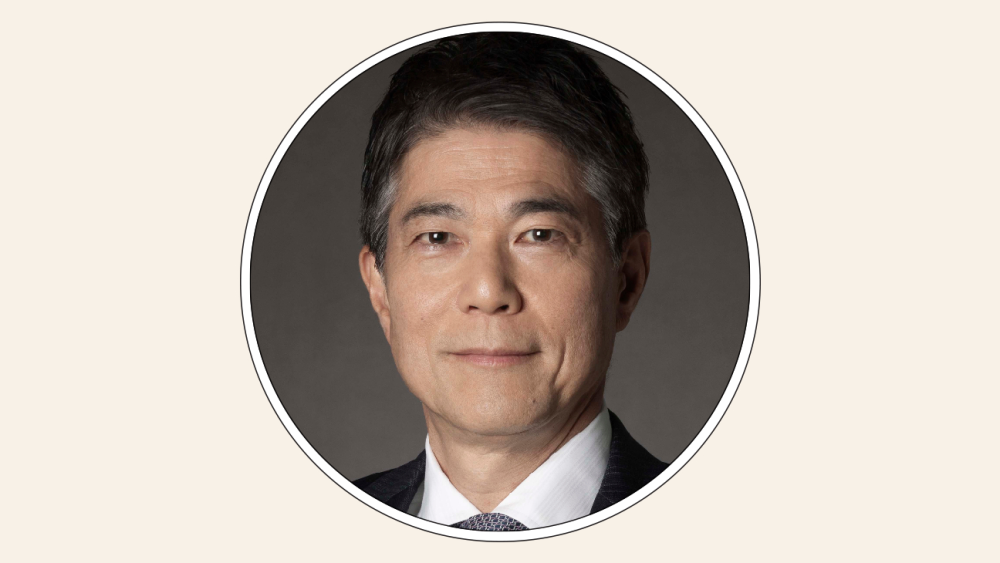
A significant shift in leadership has occurred at a major entertainment powerhouse, with the appointment of a seasoned executive to steer its Japanese operations. This strategic move signals a renewed focus on growth and deepening consumer connections within the vital Japanese market. The appointed leader brings over three decades of experience, promising to leverage deep market insight and strategic acumen to elevate the company’s entertainment presence.
The newly appointed managing director will be responsible for overseeing the expansion of the entertainment giant’s business ventures in Japan. This includes strengthening existing platforms and forging new pathways to engage the Japanese audience. The executive’s prior experience as a top leader at renowned multinational corporations positions them uniquely to drive innovation and achieve new milestones in this dynamic market.
This leadership change follows a period of significant growth and successful establishment of a robust original content pipeline. Under the previous leadership, the company’s streaming platform ascended to a leading position in Japan, demonstrating the market’s appetite for diverse and compelling content. The departing executive will continue to play a pivotal role in the company’s regional strategy, focusing on critical areas such as original content development and integrated marketing across the Asia-Pacific region.
The new managing director expressed enthusiasm about joining a globally recognized company with a rich history of beloved stories and characters. They acknowledged Japan’s increasing importance as both a consumer and content hub in the entertainment industry, and voiced a commitment to contributing to the company’s exciting momentum. This appointment underscores the company’s dedication to investing in the Japanese market and building upon the strong foundation already established.
The company’s regional president emphasized the importance of this strategic leadership change, highlighting the new managing director’s proven track record and extensive local network. They expressed confidence that the executive’s expertise will propel the entertainment business to unprecedented heights in Japan. The president also acknowledged the indelible impact of the previous leader, whose contributions have been instrumental in the company’s success in the region.
This transition marks a pivotal moment for the entertainment giant’s operations in Japan. As the industry continues to evolve, strategic leadership and a deep understanding of the local market are crucial for sustained growth and success. The newly appointed managing director’s experience and vision are poised to drive innovation, foster stronger consumer connections, and further solidify the company’s position as a leading entertainment provider in Japan.
The company is committed to delivering exceptional entertainment experiences to its Japanese audience. This commitment is reflected in its ongoing investment in original content, strategic partnerships, and innovative platforms. The new managing director will play a crucial role in ensuring that these efforts resonate with the local market and drive long-term growth.
The appointment also highlights the company’s recognition of Japan’s unique cultural landscape and the importance of tailoring its offerings to meet the specific preferences of Japanese consumers. By leveraging the new managing director’s deep understanding of the market, the company aims to create content and experiences that are both relevant and engaging.
In a rapidly changing entertainment landscape, adaptability and innovation are key. The company’s decision to bring in a seasoned leader with a proven track record demonstrates its commitment to staying ahead of the curve. The new managing director’s strategic vision and leadership will be instrumental in navigating the challenges and opportunities that lie ahead.
The company’s focus on building strong relationships with local partners and creators will also be crucial for its continued success in Japan. By fostering collaboration and supporting local talent, the company aims to create a vibrant and dynamic entertainment ecosystem that benefits both creators and consumers.
This leadership transition marks a new chapter in the company’s journey in Japan. With a renewed focus on growth, innovation, and consumer engagement, the entertainment giant is poised to further solidify its position as a leading force in the Japanese entertainment market. The appointment of the new managing director signals a strong commitment to the future and a dedication to delivering exceptional entertainment experiences to Japanese audiences.
Business
Broadway’s ‘Good Night and Good Luck’ Shatters Records with Historic Weekly Gross
Published
1 week agoon
March 26, 2025
Broadway has a new champion. The theatrical adaptation of Good Night and Good Luck has officially set a new benchmark, breaking the record for the highest weekly gross for a Broadway play with a staggering $3.3 million. This achievement is even more remarkable given that the earnings came from just seven preview performances, proving that audiences are flocking to witness the production before its official opening.
A Theatrical Milestone
The play, based on the acclaimed 2005 film, takes audiences back to the gripping era of 1950s journalism, with a legendary actor stepping into the role of the iconic broadcaster Edward R. Murrow. The story follows Murrow’s battle against Senator Joseph McCarthy during the height of the Red Scare, a narrative that remains powerfully relevant in today’s world of media scrutiny and political tension.
This new record-breaking performance dethrones the previous highest-grossing play, which had set a then-impressive record of $2.82 million in weekly earnings. While that production featured an all-star cast and performed in a theater with a slightly smaller capacity, Good Night and Good Luck has proven that historical dramas, when executed with excellence, can command massive audience interest and ticket sales.
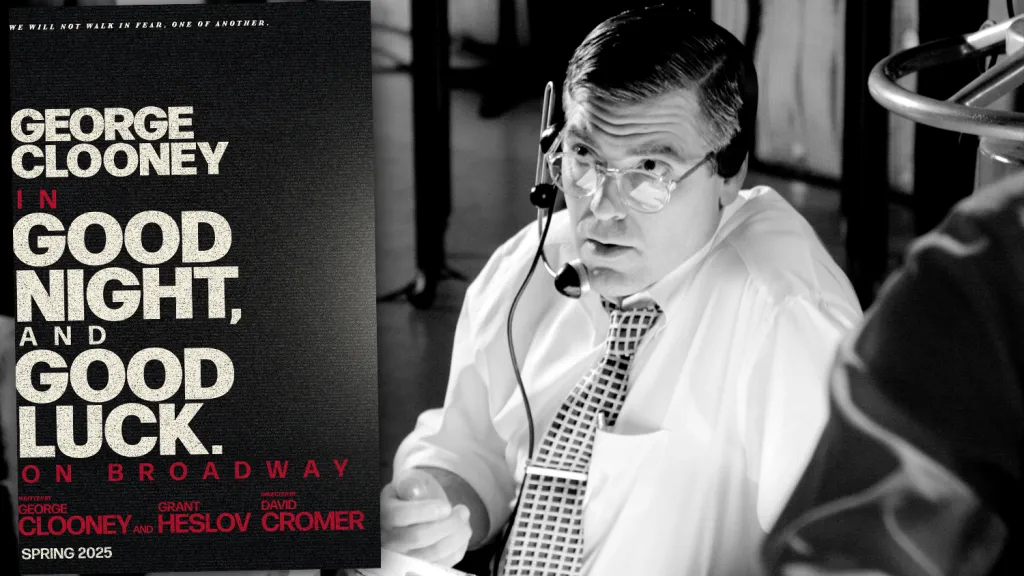
A Box Office Sensation
With an average ticket price of $302.07 and an astounding 101% theater capacity at the renowned Winter Garden Theater, Good Night and Good Luck is shaping up to be one of the most lucrative plays in Broadway history. The theater, which boasts a seating capacity of 1,545, provided the production with an edge in reaching these historic earnings.
Notably, the previous record-holder played at a different venue with a capacity of 1,043 seats. The former champion had also hosted several press previews during its record-breaking week, with a substantial number of complimentary tickets given away, which impacted its total revenue. Additionally, its Sunday performance was entirely comped due to press and VIP attendance, slightly diminishing its gross potential.
Despite these factors, Good Night and Good Luck has cemented itself at the top, demonstrating the unwavering demand for gripping, socially relevant narratives in the theater industry.
A Powerhouse Production with Unmatched Audience Demand
The success of Good Night and Good Luck is a testament to both its compelling storytelling and the powerhouse performances behind it. The play’s leading man, known for his commanding presence on stage and screen, has been a major draw for audiences. The script’s focus on journalistic integrity and political drama has also struck a chord with theatergoers, leading to near-impossible ticket availability.
What makes this feat even more impressive is that it has outpaced some of Broadway’s most legendary productions. The $3.3 million gross not only secured Good Night and Good Luck the title of the highest-grossing play in history but also placed it at the very top of Broadway’s earnings chart for the week. It surpassed even long-running musical juggernauts, including Wicked, which brought in $2.545 million.
Meanwhile, the former record-holder—despite its small ticket price dip to an average of $303.15—still performed well, securing the position of the third-highest-grossing show of the week. Other notable top earners included Glengarry Glen Ross ($2.1 million) and Hamilton ($2.07 million), both of which continue to dominate Broadway’s financial landscape.
Rising Stars and New Shows Adding to Broadway’s Momentum
The record-breaking performance of Good Night and Good Luck is part of a larger trend of increased Broadway interest, driven by a mix of new productions, celebrity-led casts, and award-season buzz. Several new plays have joined the Broadway lineup ahead of the highly anticipated Tonys eligibility deadline at the end of April, bringing even more excitement to the theater scene.
One such production, The Last Five Years, starring two incredibly popular performers, debuted at Broadway’s Hudson Theatre last week and played five performances to full capacity. It brought in an impressive $731,535 with an average ticket price of $151.14, proving that there is still a strong appetite for contemporary musicals with emotional depth.
Similarly, John Proctor Is the Villain, featuring one of Hollywood’s rising stars, made a striking entrance at the Booth Theatre. Playing just three preview performances, the show already managed to sell out at full capacity and generate $190,867 in revenue. These early figures indicate that Broadway is on an upward trajectory, with fresh content attracting diverse audiences.
Broadway’s Financial Resurgence
With all these developments, Broadway’s total industry grosses are soaring. Compared to the previous week, total earnings saw a 10% increase, driven by the blockbuster debut of Good Night and Good Luck and the addition of several new productions. Even more impressively, the industry’s total earnings for the season are up 19% compared to the same time last year, highlighting a major resurgence in live theater attendance.
Much of this success can be attributed to a combination of strong marketing strategies, strategic casting choices, and the return of audience confidence post-pandemic. Big-name stars continue to play a crucial role in driving ticket sales, as fans clamor to witness their favorite film and television actors transition onto the live stage.
Additionally, Broadway has leaned into dynamic storytelling, offering a mix of historical dramas, modern musicals, and innovative revivals. This diverse programming ensures that there is something for everyone, whether it’s a thought-provoking political play like Good Night and Good Luck or an emotionally charged musical like The Last Five Years.
What’s Next for Broadway?
As the Tonys eligibility deadline looms, Broadway is expected to see even more surprises. With several highly anticipated plays and musicals still set to premiere in the coming weeks, the competition for both audience attention and awards recognition is fiercer than ever.
Looking forward, the industry will closely watch whether Good Night and Good Luck can maintain its momentum beyond its record-breaking preview weeks. Many high-grossing plays experience a surge in ticket sales early on, only to stabilize or decline after their official opening. However, with the level of buzz surrounding this production, it’s possible that it will continue to dominate the Broadway box office for months to come.
For now, one thing is certain: Good Night and Good Luck has made history, proving that a gripping story, combined with a powerful performance, can capture the hearts (and wallets) of audiences like never before. As Broadway continues its upward trajectory, fans can only expect more groundbreaking moments in the theater world.
Business
Leaders Reap Massive Payouts in Major Industry Deal: A New Era of Private Power
Published
1 week agoon
March 25, 2025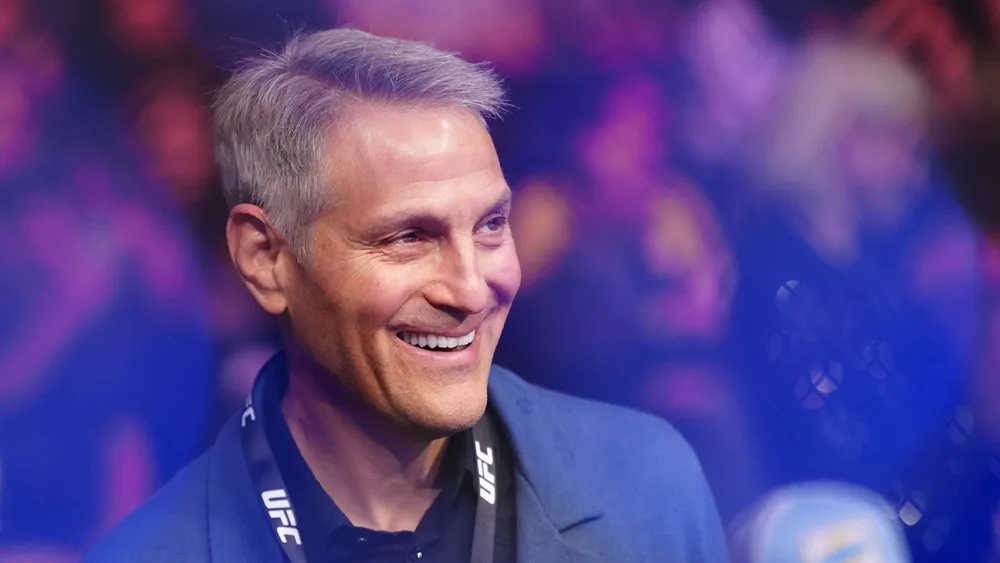
The entertainment and sports industry has witnessed a transformative event, characterized by substantial financial transactions and a strategic pivot towards private ownership. This move, marked by significant executive payouts and equity reinvestments, signals not just a financial restructuring but a fundamental shift in the industry’s power dynamics. Top-tier executives have secured remarkable nine-figure cash payouts as part of a major take-private deal, a testament to their pivotal roles in the company’s growth and success. However, the true significance lies in their decision to reinvest substantial portions of their equity, demonstrating a profound belief in the future of the newly private entity.
One prominent industry leader, a figure synonymous with strategic innovation, received a staggering $174 million payout. His counterpart, equally influential in shaping the company’s trajectory, secured $100 million. Beyond these impressive figures, both executives are demonstrating a long-term commitment by rolling over substantial equity into the new private venture. The first leader’s equity contribution exceeds $290 million, surpassing initial agreements, while the second leader is reinvesting nearly $266 million, also exceeding prior agreements. This level of personal investment underscores their confidence in the company’s future direction and potential for growth. Furthermore, a key executive, vital to the company’s daily operations, is also contributing a large amount of equity, further solidifying the leadership team’s belief in the company’s continued success.
The $25 billion deal, recently finalized, involved a $27.50 per share payout for the remaining stock, effectively concluding a nearly four-year run on the public markets. This transition to private ownership grants the company greater strategic flexibility and agility, allowing for more rapid decision-making and long-term planning. However, it’s crucial to acknowledge that the entity will retain a controlling interest in a publicly traded holding company that encompasses major sports and entertainment properties, including prominent organizations such as the UFC and WWE. This hybrid structure allows for the benefits of both private and public ownership.
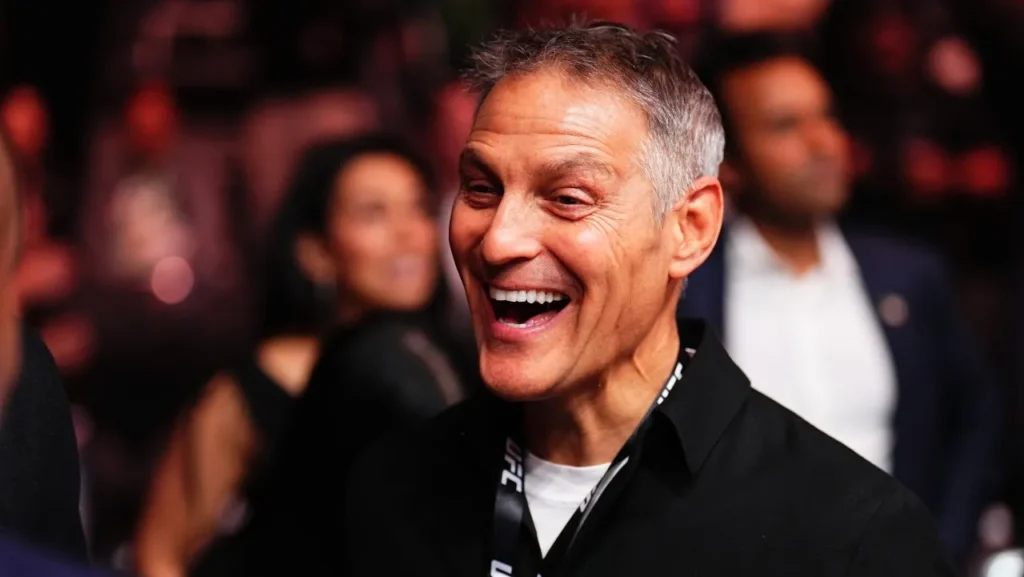
The Strategic Shift to Private Ownership
This move marks a broader industry trend where major corporations are increasingly seeking the advantages of private ownership. By eliminating the constant scrutiny of quarterly earnings reports and the pressure from public shareholders, companies can focus on long-term strategies and innovation. The ability to make swift, strategic decisions without external interference gives these companies a competitive edge in an industry that is evolving rapidly.
Private ownership also enables companies to explore new revenue streams and investment opportunities without the immediate need for market approval. This is particularly crucial in the entertainment and sports sectors, where shifting consumer behaviors, digital transformation, and emerging platforms necessitate constant adaptation. By going private, the company is positioning itself to better navigate these industry changes and capitalize on opportunities that may not align with short-term shareholder expectations.
A Bold Leadership Commitment
The executives’ decisions to reinvest substantial portions of their earnings into the newly private entity demonstrate an extraordinary level of confidence in its future trajectory. Such reinvestments are not merely symbolic gestures; they are strategic moves that align leadership incentives with the long-term success of the company.
This reinvestment also reassures stakeholders, including employees, business partners, and investors in the publicly traded holding company, that the core leadership remains committed to growth. When top executives choose to reinvest their wealth into the business, it signals strong optimism about the company’s future performance and stability. This level of commitment often translates into better decision-making, stronger leadership stability, and a clearer strategic vision.
Implications for the Industry
This transaction represents more than just a financial maneuver; it signifies a strategic realignment within the entertainment and sports industry. It reflects a growing trend towards private ownership, which offers greater control and the ability to pursue long-term strategic visions without the pressures of quarterly earnings reports. This shift comes at a time when the entertainment industry is undergoing rapid transformation, driven by technological advancements, evolving consumer preferences, and the rise of digital platforms. The move to private ownership will allow the company to adapt more quickly to these changes and capitalize on emerging opportunities.
The entertainment and sports industries are increasingly dominated by technology-driven platforms that are reshaping how content is produced, distributed, and consumed. Streaming services, social media integration, and direct-to-consumer business models have upended traditional revenue streams. As a private entity, the company will have more flexibility to invest in these areas, experiment with new business models, and form strategic partnerships that might have been difficult under public ownership.
The Role of Public-Private Hybrid Structures
While the company is transitioning into a private entity, its retention of a controlling interest in a publicly traded holding company is a unique and strategic approach. This hybrid structure allows the company to benefit from the advantages of both private and public markets. On one hand,
Business
Old Patrolman Guard Services to Acquire Sanco Records and Launch a Sister Event Security Firm
Published
2 weeks agoon
March 19, 2025
In the fast-paced world of security, reliability is everything. For Hayson Tasher, founder of Old Patrolman Guard Services (OLDPGS), security isn’t just a business—it’s a lifelong commitment. From working at top entertainment venues to protecting businesses through economic downturns, OLDPGS has stood as a pillar of trust and quality control. Now, with the acquisition of Sanco Records and plans to launch a sister event security firm, Tasher is taking his vision to the next level.
Hayson Tasher’s leadership journey began early—in the 6th grade. As both school safety officer and school president, he quickly learned the importance of responsibility and organization. One defining moment came when Mr. T visited his school for a scripted performance, instructing him to “play dead” in front of his peers. That moment sparked something within him—a realization that safety, control, and preparedness were critical in all aspects of life.
That early passion translated into his professional life, leading to the formation of OLDPGS, which started at Hollywood’s iconic venues, including The Fonda Theatre, El Rey Theatre, and The Roxy. Back then, OLDPGS was just Tasher himself, working alongside house security teams at major shows. From Tom Petty to XXXTentacion, Mavis Staples, Rich Homie Quan, Chloe x Halle, and Willow Smith, Tasher provided top-tier security, ensuring smooth and safe events.
Security is a business that never sleeps, but it’s not without obstacles. The COVID-19 recession hit many industries hard, shutting down venues and businesses. Yet, OLDPGS remained essential, standing ready for on-call security services while many clients shut their doors.
What sets Tasher apart is quality control. In an industry where cutting corners can lead to disaster, he follows the advice of his mother: “No half-ass job. Do your best.”
Now, Tasher is setting his sights on a bold expansion—the acquisition of Sanco Records and the launch of a sister event security firm. This move will allow OLDPGS to diversify into entertainment security on a larger scale, combining event expertise with top-tier protection.
Hayson Tasher’s mission isn’t just about security—it’s about opportunity. He hopes to inspire others by creating jobs and ensuring safety in entertainment and beyond. The future of OLDPGS includes retail locations selling branded security gear, from uniforms and batons to firearms and security cameras. With expanded event security operations, Tasher is ensuring seamless protection for high-profile events while reinforcing the company’s motto: “Security You Can Count On.”
With his relentless drive and commitment to quality, Hayson Tasher is proving that in security—and in business—opportunity is the key.
For more information, visit: OLDPATROLMANGUARDSERVICESOLDPGS.org
Business
#1 Best Selling Author Turns Students, Teachers, Coaches, and Support Staff Into #1 Best Sellers
Published
3 weeks agoon
March 13, 2025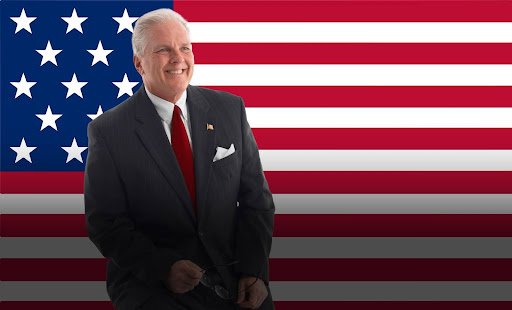
Success isn’t just about reaching the top—it’s about pulling others up with you. Robert J. Smith, MFA, a former top-ranking financial advisor and acclaimed author, has spent his life proving that excellence isn’t a one-time achievement but a mindset. With a career that spans finance, film, and publishing, Smith has reached the #1 Spot across multiple industries, from setting records at major Fortune 500 companies to ranking in the Top 1% of the Internet Movie Database (IMDb). But his latest mission may be his most impactful yet: turning over 1,000 students, teachers, coaches, and support staff into #1 Best Selling Authors through his highly acclaimed WHAT I LOVE ABOUT AMERICA! series.
An Adventure Fueled by Resilience
Smith’s story is one of persistence and reinvention. A top-producing financial advisor, and consultant for decades, he led merchandising, marketing, and sales efforts for major corporations like MONY, AXA Financial, The Equitable, Coca-Cola, Mobil Oil, and BankAtlantic. His success was nearly derailed by a tragic auto accident that left him unable to walk. Forced to close his financial offices, he refused to let adversity define him.
Instead, he adapted his form into consulting and PR—earning simultaneous degrees in film and writing at the top of his classes at UCLA and Full Sail, graduating as the Valedictorian of his master’s program. Recognized with prestigious Director’s Awards, Smith proved that no setback could hold him down. He became a #1 Best Selling Author and leveraged his expertise to help business professionals achieve the same status. Now, after years of volunteering in schools, he’s taking his passion even higher—helping young minds and educators become published authors and inspiring them to dream bigger.
Creating Young Leaders Through Writing and Public Speaking
Smith’s work in schools isn’t just about writing books; it’s about instilling confidence, patriotism, and leadership. His programs have transformed anxious students into lead actors and singers in university productions. He’s helped struggling writers turn into prolific storytellers, and his mentorship has led to dramatic improvements in test scores—boosting SAT results by over 200 points per student.
Smith’s impact goes beyond academics. By teaching students how to present themselves, dress for success, and develop public speaking skills, Smith ensures they’re prepared for real-world success. He believes that patriotism and positive role models are essential in shaping responsible, driven individuals. Through his initiatives, students learn not only to respect their country but also to respect themselves and those around them.
Building a Legacy: A Recession-Proof Mission
Smith’s business model is as resilient as he is. Having thrived through economic downturns and even the COVID-19 pandemic, his work remains recession-proof. He has spent more than 40 years consulting businesses on how to maintain stability, proving that financial literacy and adaptability are keys to long-term success.
His new initiative—turning students and educators into #1 Best Selling Authors—is an extension of this philosophy. He knows that writing a book isn’t just about storytelling; it’s about credibility, confidence, and leaving a lasting impact. With a track record of helping dozens of business professionals become #1 Best Selling Authors, Smith is now committed to providing the same opportunity to America’s youth and educators.
A Vision for the Future
Robert J. Smith, MFA doesn’t just break records—he annihilates them. In 2024, he helped dozens of business owners achieve bestseller status. In 2025, he’s committed to turning 1,000 students and educators into #1 Best Selling Authors. And he won’t stop there—his goal is to double that number year after year.
“We truly live in the land of opportunity,” says Smith. “If I can rise to the top, lose it all due to injuries that others caused, and climb back to the top again, so can anyone else in America. My life’s calling is to bring opportunities to as many people as I can, both young and old.”
Through WHAT I LOVE ABOUT AMERICA! Smith is not just creating #1 Best Selling authors—he’s shaping the future of the nation. By giving students and educators the tools to succeed, he’s ensuring that the next generation has the confidence, skills, and patriotism to lead with purpose.
You can connect with Robert J. Smith, MFA through various platforms. To explore his work and insights, visit his official website at smithprofits.com. For professional updates and networking, you can follow him on LinkedIn at Robert J. Smith’s LinkedIn. If you have any media inquiries or wish to get in touch with him directly, you can reach out through his contact page at smithprofits.com/contact.
Business
The Great Crypto Heist: How North Korea’s Hackers Pulled Off a Billion-Dollar Digital Robbery”
Published
3 weeks agoon
March 10, 2025
In an audacious and highly sophisticated cybercrime operation, hackers believed to be working under North Korea’s regime have successfully converted a significant portion of their record-breaking $1.5 billion cryptocurrency heist into cash. Investigations reveal that at least $300 million worth of stolen digital assets has already been laundered, despite global efforts to track and block the illicit funds.
The hacking group, widely known as Lazarus Group, executed the massive theft by infiltrating the crypto exchange ByBit two weeks ago. Since then, cybersecurity experts and blockchain investigators have been engaged in a relentless battle to prevent the stolen assets from being converted into fiat currency.
A Race Against Time
Forensics experts believe the Lazarus Group is operating around the clock, utilizing advanced techniques to obscure the flow of stolen funds. According to Dr. Tom Robinson, co-founder of blockchain analytics firm Elliptic, the group exhibits an exceptional level of expertise in laundering cryptocurrency.
“Every minute counts for them,” says Robinson. “They employ highly sophisticated methods to mask their activities, making it difficult to intercept the stolen funds.”
Reports indicate that the group has developed a near-mechanical approach to their operations, possibly working in shifts to ensure continuous movement of the assets. Their expertise in crypto laundering is considered unparalleled, making it increasingly challenging for authorities to track down the funds before they disappear into the dark corners of the financial world.
How the Heist Unfolded
The incident began on February 21, when Lazarus Group exploited a vulnerability in one of ByBit’s suppliers. They manipulated the system to reroute 401,000 Ethereum tokens—worth a fortune—into their own digital wallet. ByBit had intended to transfer the assets into its own secure reserves, but instead the funds landed in the hands of the attackers.
Despite the massive breach, ByBit CEO Ben Zhou reassured customers that their personal funds remained untouched. The exchange swiftly replenished the stolen assets through loans from investors, vowing to fight back against the perpetrators.
The Hunt for Stolen Crypto
ByBit has since launched an initiative to track and recover the stolen funds. The “Lazarus Bounty” program incentives blockchain enthusiasts and security experts to identify and freeze illicit transactions linked to the heist. So far, 20 individuals have collectively earned over $4 million in rewards for successfully flagging $40 million worth of stolen assets.
Cryptocurrency transactions are recorded on a public blockchain, making it possible to trace movements in real-time. If the hackers attempt to convert the funds through legitimate exchanges, those platforms can potentially freeze the assets—provided they cooperate with authorities.
However, not all crypto exchanges are equally willing to assist. One such platform, eXch, has been accused of enabling the laundering process by failing to block transactions linked to the heist. Investigators suggest that over $90 million has already been processed through eXch, raising concerns about the lack of industry-wide cooperation in combating cybercrime.
eXch’s owner, Johann Roberts, initially resisted efforts to halt the flow of stolen funds. He cited an ongoing dispute with ByBit as one reason for the delay. While he now claims to be cooperating, he remains critical of mainstream exchanges that identify users, arguing that such measures compromise the core principles of cryptocurrency privacy.
Cybercrime as State Policy?
The Lazarus Group has a long history of targeting financial institutions and cryptocurrency platforms to funnel funds into North Korea’s military and nuclear programs. Although Pyongyang has never officially admitted to sponsoring the group, cybersecurity experts and intelligence agencies believe the country is the only nation using cybercrime as a state-sanctioned revenue stream.
Over the past few years, North Korean hackers have been linked to several high-profile crypto thefts, including:
- The 2019 UpBit hack, which resulted in a $41 million loss
- A $275 million attack on KuCoin in 2020, though most funds were recovered
- The 2022 Ronin Bridge breach, which saw a staggering $600 million stolen
- The 2023 Atomic Wallet heist, which stripped users of approximately $100 million
Despite international sanctions and ongoing cyber crackdowns, North Korea continues to evolve its tactics, leveraging sophisticated laundering techniques that make tracking and recovering stolen assets increasingly difficult.

The Future of Cybersecurity in Crypto
This latest attack underscores a critical weakness in the cryptocurrency industry: the lack of universally enforced security and regulatory standards. While blockchain technology offers transparency, the decentralized nature of crypto makes it difficult to enforce strict anti-money laundering measures across all platforms.
Governments and cybersecurity firms are calling for stricter regulations, increased cooperation between exchanges, and improved tracking tools to counteract cyber threats. The United States has placed members of the Lazarus Group on its Cyber Most Wanted list, but the chances of apprehending these individuals remain slim unless they travel outside North Korea’s tightly controlled borders.
As digital finance continues to grow, the battle between cybercriminals and global security forces will only intensify. For now, the Lazarus Group’s latest heist serves as a stark reminder of the vulnerabilities in the crypto ecosystem and the urgent need for stronger safeguards against state-sponsored cybercrime.
Trending
-

 Health4 years ago
Health4 years agoEva Savagiou Finally Breaks Her Silence About Online Bullying On TikTok
-

 Health3 years ago
Health3 years agoTraumatone Returns With A New EP – Hereafter
-

 Health3 years ago
Health3 years agoTop 5 Influencers Accounts To Watch In 2022
-

 Fashion4 years ago
Fashion4 years agoNatalie Schramboeck – Influencing People Through A Cultural Touch
-

 Fashion4 years ago
Fashion4 years agoThe Tattoo Heretic: Kirby van Beek’s Idea Of Shadow And Bone
-

 Fashion8 years ago
Fashion8 years ago9 Celebrities who have spoken out about being photoshopped
-

 Health4 years ago
Health4 years agoTop 12 Rising Artists To Watch In 2021
-

 Health4 years ago
Health4 years agoBrooke Casey Inspiring People Through Her Message With Music
-

 Tech2 years ago
Tech2 years agoGoogle Developer Conference to Unveil Latest AI Updates, Including PaLM 2 Language Model
-

 Health3 years ago
Health3 years agoTop 10 Influencers To Follow This 2021
